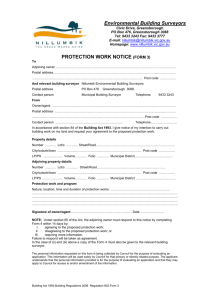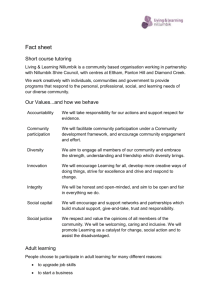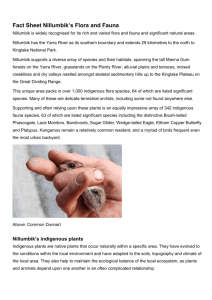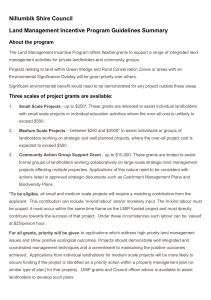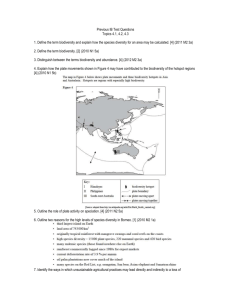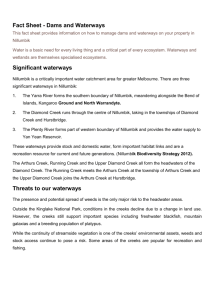Environment Charter accessible version
advertisement
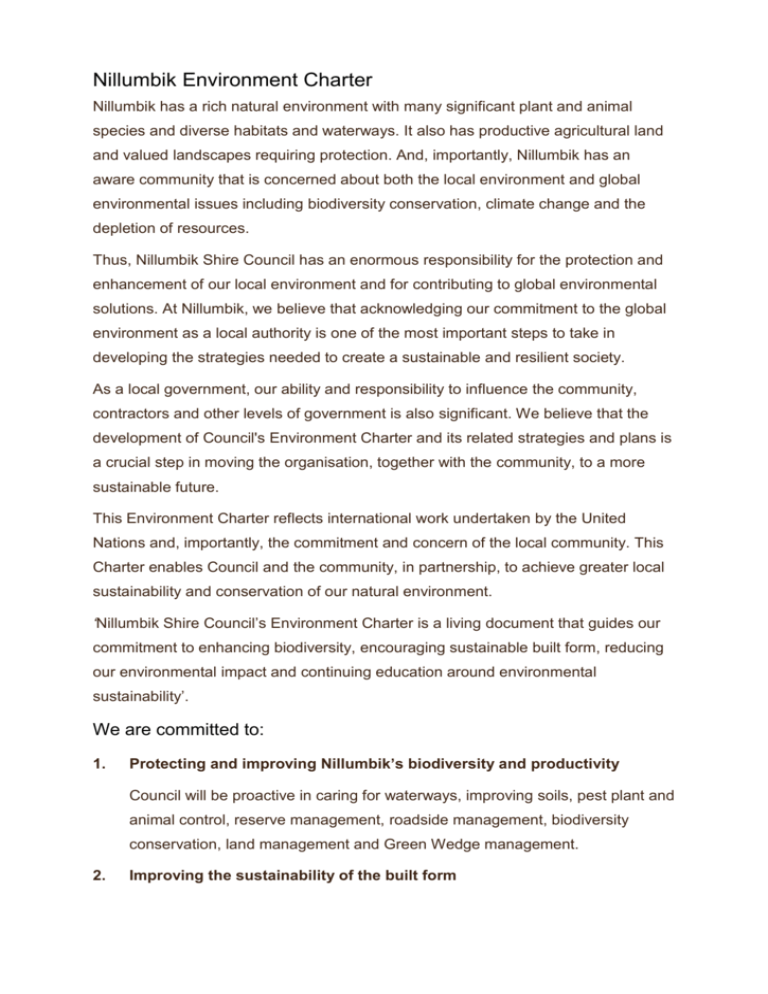
Nillumbik Environment Charter Nillumbik has a rich natural environment with many significant plant and animal species and diverse habitats and waterways. It also has productive agricultural land and valued landscapes requiring protection. And, importantly, Nillumbik has an aware community that is concerned about both the local environment and global environmental issues including biodiversity conservation, climate change and the depletion of resources. Thus, Nillumbik Shire Council has an enormous responsibility for the protection and enhancement of our local environment and for contributing to global environmental solutions. At Nillumbik, we believe that acknowledging our commitment to the global environment as a local authority is one of the most important steps to take in developing the strategies needed to create a sustainable and resilient society. As a local government, our ability and responsibility to influence the community, contractors and other levels of government is also significant. We believe that the development of Council's Environment Charter and its related strategies and plans is a crucial step in moving the organisation, together with the community, to a more sustainable future. This Environment Charter reflects international work undertaken by the United Nations and, importantly, the commitment and concern of the local community. This Charter enables Council and the community, in partnership, to achieve greater local sustainability and conservation of our natural environment. ‘Nillumbik Shire Council’s Environment Charter is a living document that guides our commitment to enhancing biodiversity, encouraging sustainable built form, reducing our environmental impact and continuing education around environmental sustainability’. We are committed to: 1. Protecting and improving Nillumbik’s biodiversity and productivity Council will be proactive in caring for waterways, improving soils, pest plant and animal control, reserve management, roadside management, biodiversity conservation, land management and Green Wedge management. 2. Improving the sustainability of the built form Council will actively utilise and promote sustainable building design, products and techniques, responsible use of materials, energy conservation, retro-fitting, renewable energy and sustainable water management. 3. Reducing our daily environmental impact Council is committed to reducing its carbon footprint through a reduction in waste, improved transport, greener purchasing and sustainable use of natural resources. 4. Adapting to the environmental impacts of climate change Council will better prepare for prolonged drought periods, intense rainfall periods and heatwave conditions. 5. Educating and inspiring Council will work with staff, community and business through integrated, thematic and life-long learning to encourage and facilitate more sustainable environmental outcomes. Council’s environmental policies and plans: Biodiversity Strategy 2012 Environmental Education Strategy 2012 Ecologically Sustainable Development Policy 2012 Green Wedge Management Plan 2010-2025 Climate Change Action Plan 2010-2015 Rabbit Action Plan 2009 Weed Action Plan 2008 Sustainable Water Management Plan 2008 Stormwater Management Plan 2001 Waste Management Strategy Reserve Management Plans Individual project plans Integrated Water Management Study


